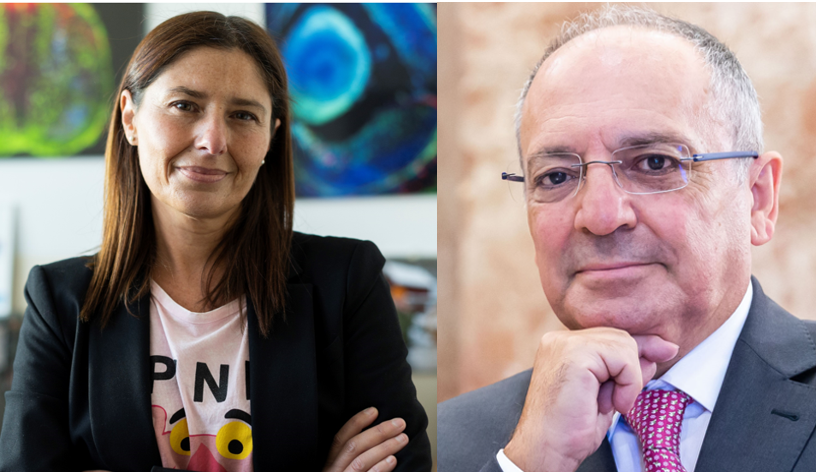Researchers from the Institute of Neurosciences participated in the writing of two reports presented to the Congress of Deputies
17 de January de 2024
The Office of Science and Technology of the Congress of Deputies (Office C) has published six new reports that contextualize and summarize multidisciplinary scientific knowledge on six topics of sociopolitical relevance. To prepare it, 121 experts from several scientific fields have been interviewed, including researchers from the Institute for Neurosciences (IN), a joint center of the Spanish National Research Council (CSIC) and the Miguel Hernández University (UMH) of Elche, Eloísa Herrera and Juan Lerma. The experts have provided their vision on the present and future challenges of neuroscience in the face of population aging, the current state of the most prevalent neurodegenerative diseases, their causes, diagnosis, and treatments, as well as their ethical and legal implications.
Increased life expectancy leads to a greater prevalence of neurological, mental, and general health conditions. This is a challenge that the scientific community faces with two main approaches. On the one hand, through basic and clinical research, understand these pathologies in depth. Furthermore, the development of neurotechnologies offers promising hope to address these problems more effectively.

Eloísa Herrera and Juan Lerma, researchers at the IN-CSIC-UMH.
The researcher Eloísa Herrera has collaborated as an expert in the report 'Advances in Neuroscience', prepared by the Office of Science and Technology of the Congress of Deputies. The text describes the technical advances in the direct connection between the brain and machines or computers, through interfaces that have allowed, for example, the recovery of mobility in the hands of people paralyzed by a stroke. Herrera leads a team focused on basic research on regenerative medicine for the recovery of mobility and vision. In her laboratory, Generation and Regeneration of Bilateral Neural Circuits, great advances have been made in the knowledge of the higher functions of the brain. For example, a study published in 2020 identified the genetic program that controls the transmission of images from the retina to the brain to be able to see in 3 dimensions.
In addition to their demonstrated usefulness in the health field, the report states that neurotechnologies raise expectations in the commercial and economic sphere. Since 2012, investment in its development has multiplied by 21, exceeding 30 billion euros and it is expected that, within a period of 5 to 10 years, technologies will be achieved that record, evaluate, modify, and improve the mind, the ability cognitive and the state of consciousness, among other disruptions.
Likewise, the scientific community poses challenges related to the link between the physical brain and higher functions such as consciousness, thinking, learning, memory, language, or emotions. There is still no theory that comprehensively explains how the brain works in this sense. In 2023 the first atlas of human brain cell types at the molecular level was completed. However, understanding how these cells are organized into circuits that make the brain function is still a challenge.
For his part, Juan Lerma, who leads the Synaptic Physiology laboratory at the IN, participated as an expert in the report 'Advances in neurodegenerative diseases', which addresses one of the most pressing future challenges associated with the aging of the population. This report summarizes current knowledge about the most prevalent neurodegenerative diseases through aspects such as causes and risk factors, the current state of diagnosis and treatments, as well as the adaptations of the health system and social services to address them.
This work highlights the need to develop new strategies for the early detection of these pathologies, and the need to develop a professional, specialized, and sustainable care system that can offer comprehensive care by coordinating social and health factors more effectively. In Spain, neurodegenerative diseases such as Parkinson's disease or Alzheimer's affect more than a million people, entailing a high personal, social and economic cost.
Juan Lerma is vice president of the European Brain Council, and his research has contributed to clarifying the basic mechanisms of neuronal communication and its plastic properties, which are fundamental for learning and memory processes. This basic knowledge has allowed us to identify functional alterations in specific neuronal networks in pathological contexts, providing potential targets for the development of new therapeutic strategies. He is currently investigating the role of glutamate receptors in certain pathologies, such as autism or Down Syndrome. In a recent study, his group identified a single gene responsible for the spatial memory disorders experienced by patients with Down Syndrome.
Office C has also produced other socially relevant reports on aging and well-being, air quality, forest fires, and misinformation in the digital age.
Source: Servicio de Comunicación UMH / Institute for Neurosciencies CSIC-UMH (in.comunicacion@umh.es)

 Español
Español